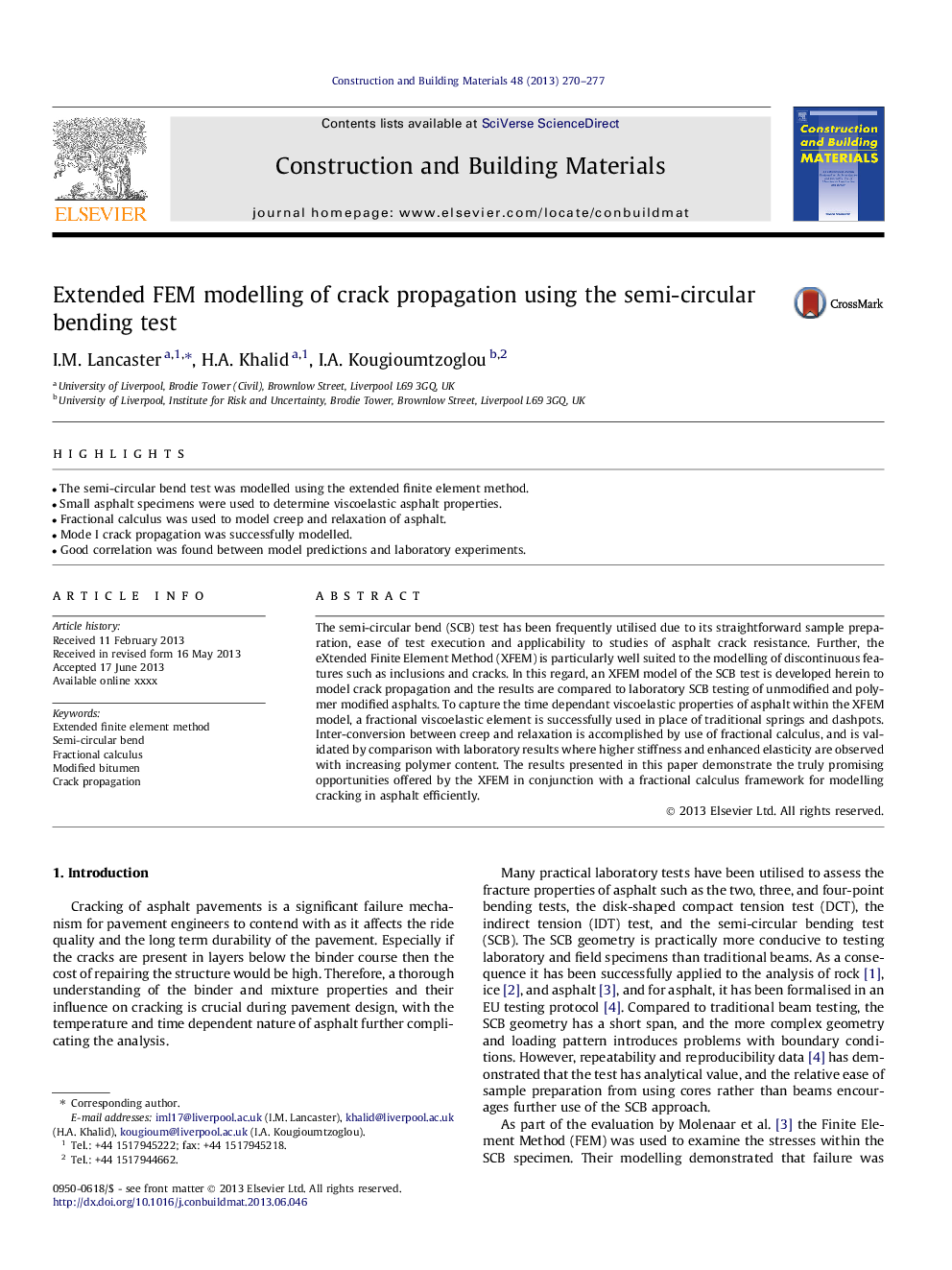| Article ID | Journal | Published Year | Pages | File Type |
|---|---|---|---|---|
| 6725339 | Construction and Building Materials | 2013 | 8 Pages |
Abstract
The semi-circular bend (SCB) test has been frequently utilised due to its straightforward sample preparation, ease of test execution and applicability to studies of asphalt crack resistance. Further, the eXtended Finite Element Method (XFEM) is particularly well suited to the modelling of discontinuous features such as inclusions and cracks. In this regard, an XFEM model of the SCB test is developed herein to model crack propagation and the results are compared to laboratory SCB testing of unmodified and polymer modified asphalts. To capture the time dependant viscoelastic properties of asphalt within the XFEM model, a fractional viscoelastic element is successfully used in place of traditional springs and dashpots. Inter-conversion between creep and relaxation is accomplished by use of fractional calculus, and is validated by comparison with laboratory results where higher stiffness and enhanced elasticity are observed with increasing polymer content. The results presented in this paper demonstrate the truly promising opportunities offered by the XFEM in conjunction with a fractional calculus framework for modelling cracking in asphalt efficiently.
Keywords
Related Topics
Physical Sciences and Engineering
Engineering
Civil and Structural Engineering
Authors
I.M. Lancaster, H.A. Khalid, I.A. Kougioumtzoglou,
